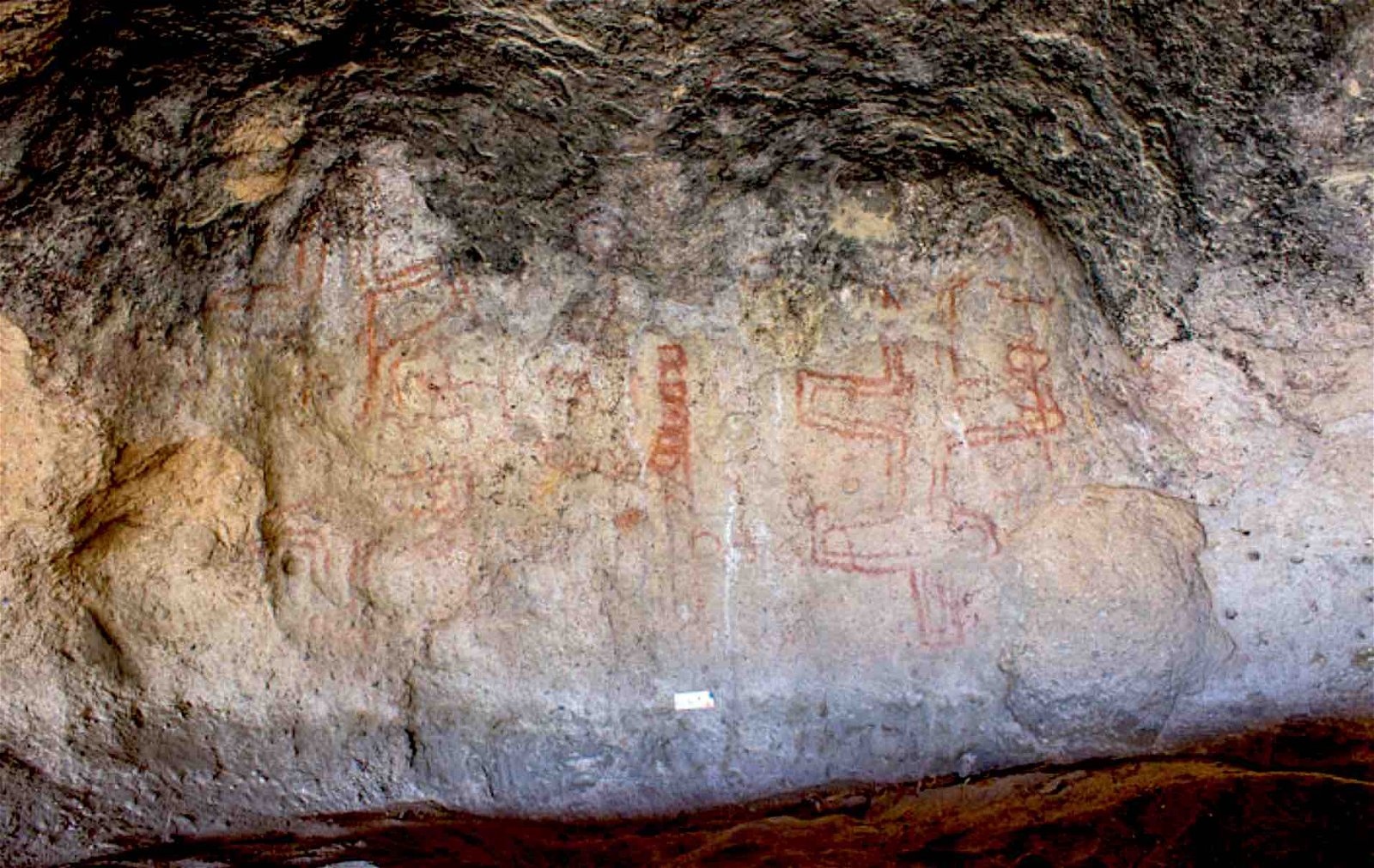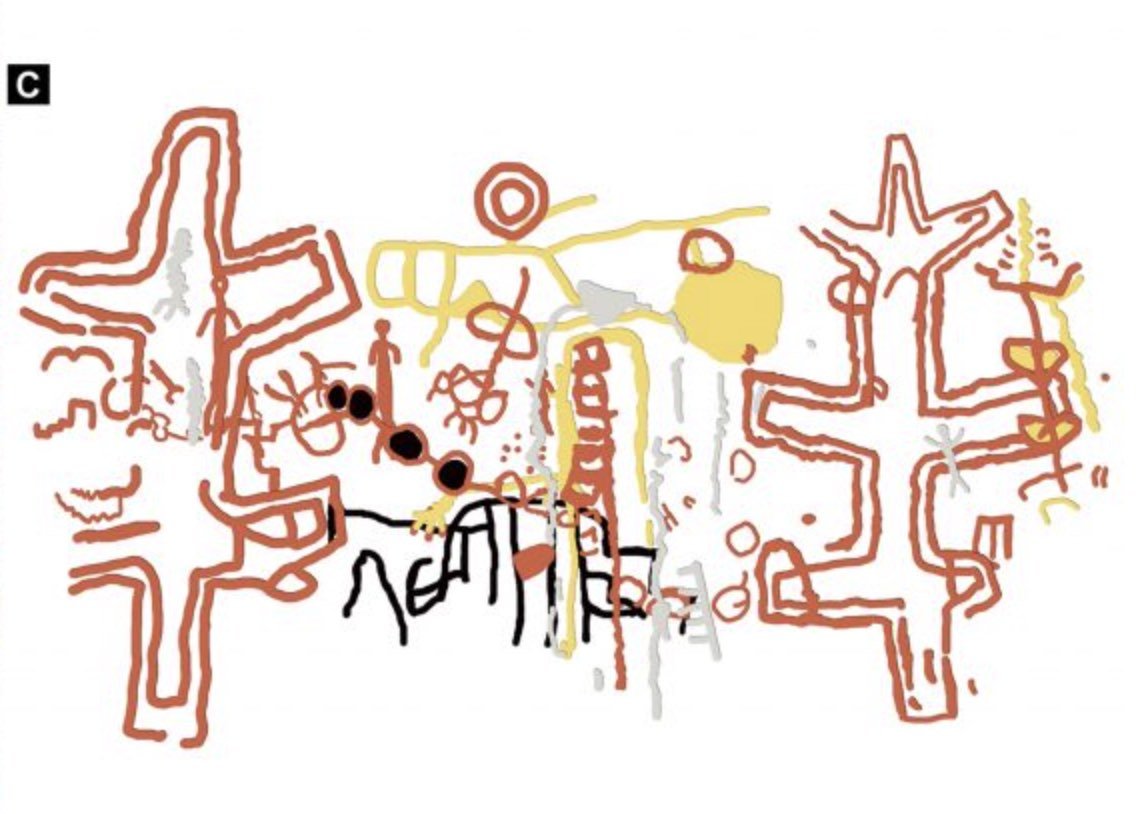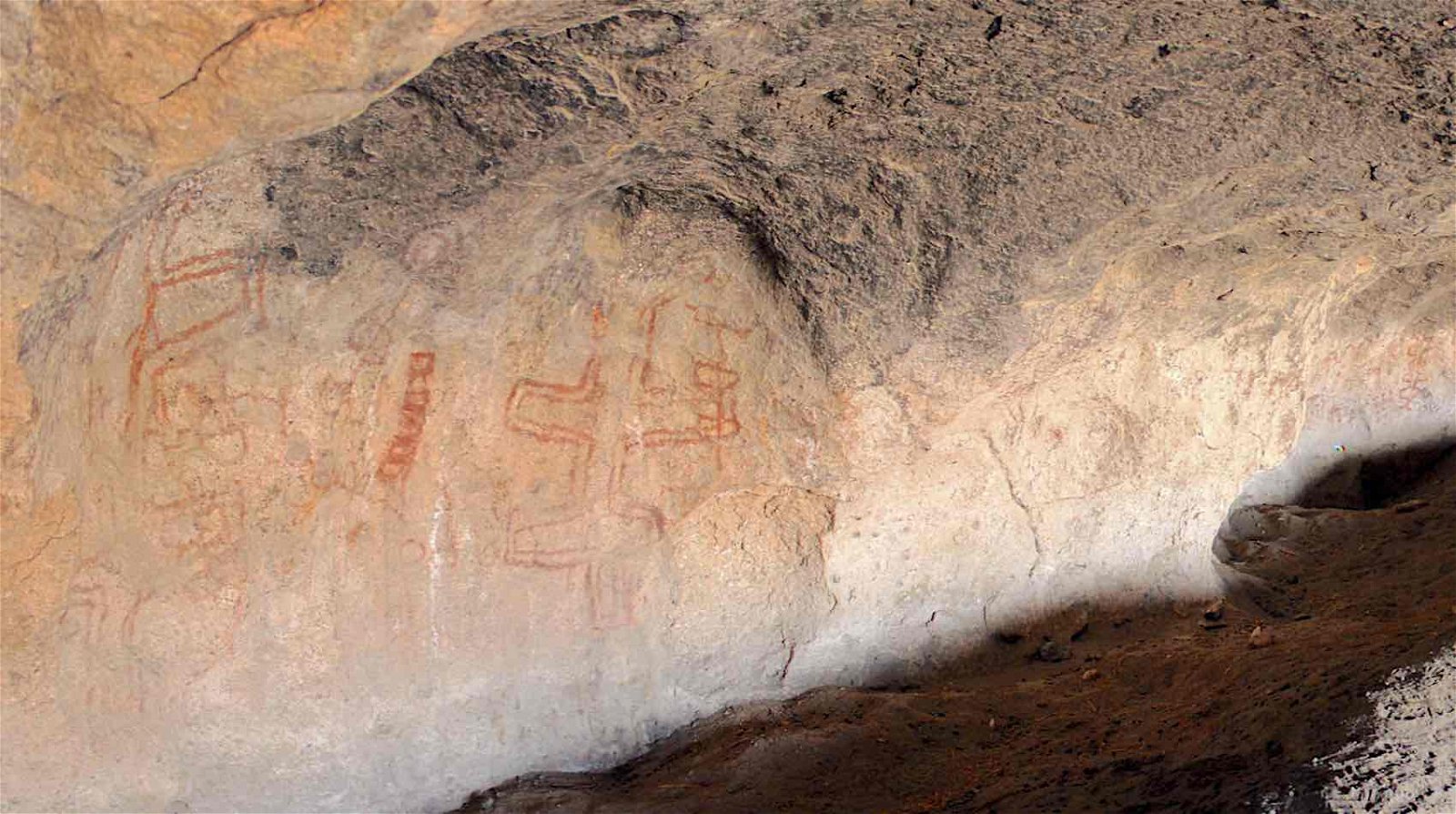Throughout the world, ancient artistic depictions that were long ago applied to the walls of caves and other stone surfaces offer a window to the past, and into the minds of those who crafted such imagery.
Now, recent research into the emergence of rock art in Patagonia has revealed that imagery depicted at the Cueva Huenul 1 cave is thousands of years older than archaeologists previously estimated.
The findings, detailed in Science Advances, offer new insights into both the evolution of rock art in the region and the ancient humans who resided there, but also have broader implications for our understanding of the sociocultural conditions that might have helped propel the emergence of ancient art.
Unlike other parts of South America, explorations of Patagonia’s prehistory were comparatively recent and remain limited in many respects, with much of its rock art and other archaeological offerings still undated using modern techniques.
Some of the most striking art in the region exists at the Cueva Huenul 1 cave, whose walls and ceiling feature almost 900 paintings that past studies have grouped into 446 motifs.


“CH1 is the most notable place for pigment-based rock art production in northwestern Patagonia and neighbor areas of central-western Argentina and central Chile,” the authors of the new study write, who now say they are among the oldest anywhere in the region, dating to thousands of years earlier than previous studies had placed them.
“We report the earliest set of directly radiocarbon-dated rock art motifs from the archaeological site Cueva Huenul 1,” some of which the authors say appeared “8.2 thousand years before the present (ka B.P.), predating previous records by several millennia,” and having been created over close to 130 generations during a 3,000-year period.
According to the study, this mid-Holocene gallery coincides with a “rock art emergence” phase that dovetails with arid conditions in the region and a temporary decline in the region’s human population.
“We suggest that this diachronic rock art emerged as part of a resilient response to ecological stress by highly mobile and low-density populations,” the authors report.


Ramiro Barberena, an archaeologist with Temuco Catholic University and Argentina’s National Research Council, says the cave “is not the oldest occupation in South America, but it is the oldest directly radiocarbon-dated pigment-based rock art in South America.”
Barberena, one of the co-authors of the new study, believes the art at Cueva Huenul 1 may have been used to help convey ideas that may have been related to the region’s arid condition, and preserved that information across successive generations.
“It would’ve been hard to make it on your own, so an exchanging of information was important,” Barberena says.
In their paper, Barberena and his colleagues conclude that they “have presented a parsimonious interdisciplinary explanation where rock art tied to a site turned by transgenerational practices into a keystone cultural place facilitated social and biological connectivity in a sparsely populated high-cost landscape.”
The team’s study, “Earliest directly dated rock art from Patagonia reveals socioecological resilience to mid-Holocene climate,” was published in Science Advances on February 14, 2024.
Micah Hanks is the Editor-in-Chief and Co-Founder of The Debrief. He can be reached by email at micah@thedebrief.org. Follow his work at micahhanks.com and on X: @MicahHanks.

